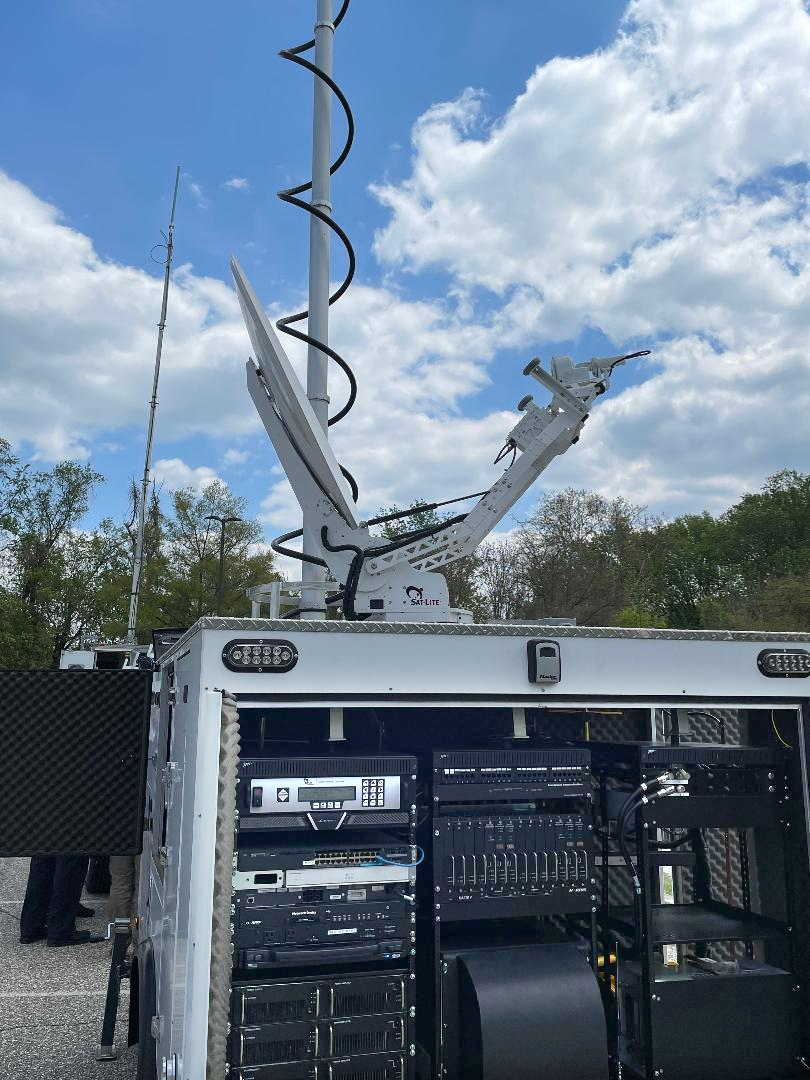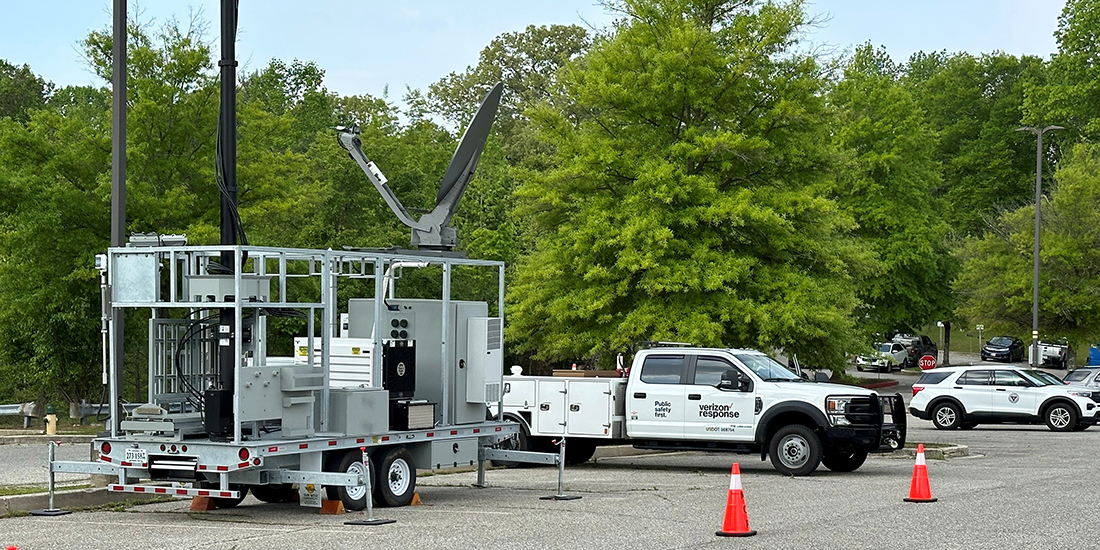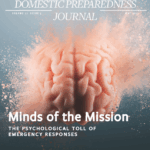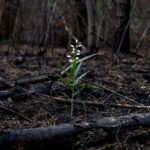In a disaster, a wide range of communications technologies are essential to interoperability, ranging from amateur radio to satellite technology. This article focuses on one of several important strategies: land mobile radio devices using the 700 and 800 MHz public safety spectrum.
Starting in the 1980s, the Federal Communications Commission (FCC) established 110 regional planning committees to aid in developing radio frequencies dedicated to public safety agencies within the 700 MHz and 800 MHz spectrums. These assignments contained specific national frequencies limited to public safety communications interoperability. However, public safety agencies continue to address interoperability gaps today. The progress of addressing these gaps is outlined below in four ongoing Region 20 best practices and national actions.
Assign Public Safety 700 and 800 MHz National Public Safety Planning Advisory Committee Frequencies
For the District of Columbia, Maryland, and Northern Virginia, the FCC’s Regional Planning Committee 20 (Region 20) comprises first responder organizations responsible for developing plans for assigning and coordinating radio frequencies within this spectrum. The FCC’s approval of regional planning committee plans dedicated new frequency allotments in the 700 MHz band to public safety throughout Region 20. The initial allotments aligned with nationwide interoperability frequencies for first responders.
In 1987, FCC-mandated plans incorporated five new nationwide interoperability channels in the 800 MHz band (8CALL90 and 8TAC91-94). The FCC established technical requirements for these initial channels to operate consistently throughout the United States. To address the unique needs of the National Capital Region, Region 20 addressed communications challenges by establishing additional regional inter-service 800 MHz channels and frequencies for fixed police and fire inter-station communications as well as separate mobile operations. Approximately 15 years later, the FCC established 32 additional nationwide interoperability channels in the 700 MHz frequency band.
The FCC creating these nationwide interoperability channels was the easy part. However, first responders nationwide have encountered major challenges as agencies fund, train, and implement these important resources. For example, critical communication failures between public safety agencies were highlighted in The 9/11 Commission Report following the September 11, 2001, terrorist attacks.
Develop a Template
Region 20, with the support of three statewide interoperability coordinators, responded to interoperability challenges by first developing a template for nationwide and other interoperability resources in 2018. The template shows programmers how the radio’s operating zones, talk groups, and frequencies should be programmed. (Note: Talk groups identify multiple users serving a common purpose, such as police officers patrolling a defined geographical area, and are uniquely programmed into a radio.) Templates help ease operator confusion in emergencies due to the way radio frequencies and groups are organized (into zones) within user radios, which provides consistency during multi-jurisdictional operations. For interoperable communications, first responders need to have identically configured radios and use the same terminology for radio zones, channels, or talk groups. In the best of circumstances, this important step can take years to implement since individual agency acceptance of an external template is needed.
Additionally, subscriber devices typically have extremely limited code configuration update cycles for radio modifications. In the National Capital Region, for example, most agencies have thousands of mobile and portable radios that must be updated on a specific time cycle. Updates, including those for interoperability, mean that radios must be physically taken out of service briefly for reprogramming. This can be a time-consuming process and must be carefully reviewed as well as approved in advance before changes can be included in the code plug update cycle.
Keep It Simple
Another challenge is radio “real estate” in a first responder device. While most radios have ample room for zones and internal frequencies, there comes a point at which the radio’s departmental or mutual aid plan is simply too large for first responders to use efficiently. In the Region 20 Interoperability template, for example, there are ten basic zones and four additional zones for users of the Maryland First Responder Radio System Team (Maryland FiRST) interoperability talk groups. Statewide law enforcement organizations may have a zone (or zones) for each county in their state, as well as special internal and external operational zones programmed into their radios. This complexity of operations demands that templates be carefully created.

The Region 20 template is limited to the most basic interoperability requirements, including the five 800-MHz and thirty-two 700-MHz nationwide channels that the FCC established and the U.S. Department of Homeland Security defined in the National Interoperability Field Operations Guide (NIFOG). Additionally, the regional inter-service channels and deployable trunking zones are included to minimize impact on radio “real estate.” (Region 20 follows the nationwide deployable trunking guide developed by the National Public Safety Telecommunications Council [NPSTC] Guide for programming.)
A Trunked Radio System is defined as a type of radio system that centrally manages a pool of channels, intelligently switching users to available channels to enable efficient communication among a large number of users without interference. –Science Direct
To add to an already complex interoperability template, Region 20 must remain sensitive to the Association of Public-Safety Communications Officials (APCO) or other standards organizations’ future changes to maintain consistency with the NIFOG and additional national updates.
Train Beyond Daily Operations
Beyond template design and interoperability configuration, the major challenge for first responders successfully using nationwide interoperability frequencies is training. Interoperability resources may be rare unless operators work in border areas or have cross-jurisdictional agreements. For example, these agreements are common between fire and emergency medical services but are less customary in law enforcement, where personnel may not be trained extensively on this technology. As incidents grow in scale and complexity, interoperability training must include all first responders who use interoperable communication in their daily operations.
There are three general levels of interoperability: local, regional, and other. Local interoperability, particularly in fire and emergency medical services, may occur daily and is typically found in cross-border mutual aid agreements. Larger networks can provide regional or wider area interoperability, with coordinated stations located throughout a state. For example, the Maryland FiRST statewide public safety system has coordinated stations positioned throughout the state and the District of Columbia and can follow an emergency event, such as a police pursuit, throughout the State in real time. This system’s user-driven operation provides extended interoperability capabilities throughout Region 20 and border states and is accessible for regional or statewide interoperability events.
Major events like Hurricane Helene, which devastated wide areas of the Southeast in 2024, may occur less frequently, yet they require wide-ranging interoperability. These kinds of extraordinary events, defined by the author as “other,” make communications extremely challenging, as first responders from many states may send teams to assist in recovery and rescue efforts. When local public safety communications are destroyed or limited, as in the case of Helene, resources such as deployable trunking, temporary nationwide interoperability stations, or other emergency communications resources may be transported into the area. The available public safety communications infrastructure may often be foreign to out-of-state responders unless they have pre-programmed radios with nationwide interoperability, access deployable trunking channels, and follow the NIFOG. (APCO is revising the national plan regarding deployable trunking for consistency of operations throughout the country.)
As an example, Region 20 complied with ESF-2 by adopting published nationwide standards such as the NIFOG, the NPSTC report 700 MHz Nationwide Deployable Trunked Solutions, and applicable FCC requirements. This kind of standardization is critical because, during a disaster response, it is too late to train users or modify hundreds of radios. Training must happen on a continuing basis and well before crisis events.
An Ongoing Role for Regional Planning Committees
Regional planning committees can be helpful resources in support of training. For example, Region 20 was included in Maryland’s Statewide Communications Interoperability Plan and tasked with designing and supporting testing. Region 20 and the Department of Homeland Security’s Cybersecurity and Infrastructure Security Agency (CISA) participated in a comprehensive “tabletop” exercise in 2024 that created a series of mock events in Washington, Northern Virginia, and Maryland. The benefit of a tabletop exercise is that they lead to other training events throughout an area of responsibility.
The complexities of public safety communications have been highlighted during major events like the attacks on September 11, 2001, and Hurricane Helene. However, even after millions of state, federal, and local government dollars have been spent on new equipment to strengthen interoperability, much work to train first responders remains. Regional planning committees can and should play an important role in support of continual training and interoperability exercises.

Charles (Charley) Bryson
Charles V. Bryson is the former chair of Region 20 and the National Regional Planning Committee. He has served on multiple nationwide planning committees for the Association of Public-Safety Communications Officials and participated in public safety and first responder organizations as a practitioner and consultant since 1966. He earned a B.S. and an M.S. degree in criminal justice administration from Virginia Commonwealth University (VCU) and served as an adjunct faculty member at both VCU and J. Sargeant Reynolds Community College.
- Charles (Charley) Brysonhttps://disasterpreparedness.kinsta.cloud/author/charles-charley-bryson






